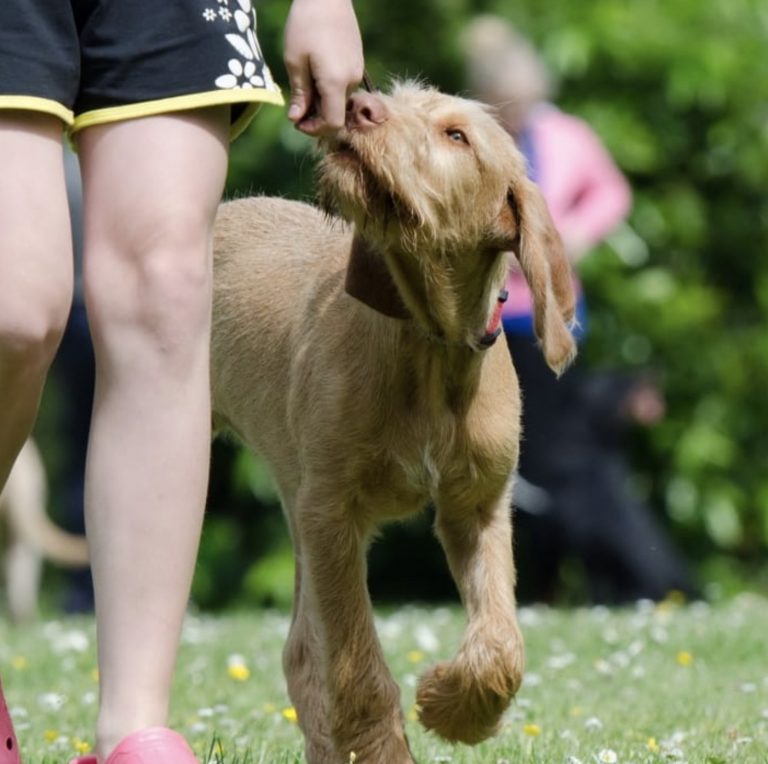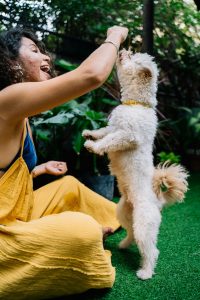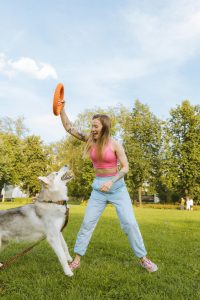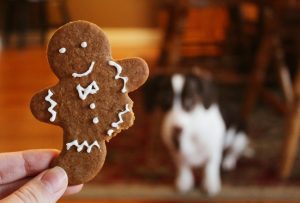Trainers of all skill levels will tell you, training your when there are no distractions is easy. The problem is when you take things to the next level and there are too many distractions. Proofing a behavior for reliability despite environmental distractions is the elusive training goal for a dog owner or dog trainer. There is hope. And it is possible. You just have to work a lot more.
What are some of the common distractions that can affect your training? Well, it depends on your puppy. If you have a hound dog, sniffing can become a problem. For some dogs, moving objects is a problem since they are alert.
But the common distractions generally include other people, other animals, sudden noise, food, doorbells, and moving objects.
Here are some techniques you can use to train your dog despite distractions.
Start small
The most important thing we have to note is to start small. Set up your dog for success in a stress-free and distraction-free environment.
Then, gradually increase the difficulty. If your dog fails, go back to a lower-level distractions environment. You need at least a couple of successful tries before you can move to the next level. And if your dog doesn’t deliver consistent results, move back.
Make a list of potential distractions. Rank them 1 through 10. And then up the level as your dog delivers consistent results. Temporarily lower the criteria if your dog is unable to respond to a cue in a new environment.
Increase rate of reinforcement
Increasing the rate of reinforcement is one way to keep your dog’s attention on you despite any distractions. What does that mean in reality? Well, instead of rewarding your dog every minute, reward him every 30 seconds.
This is just an example. Or if you are teaching polite leash walking, instead of rewarding every 20 steps, reward every 10 steps, every 5 steps, or however you need. When you increase the difficulty, you might need to click every single step initially before you get decent results. Gradually increase criteria depending on your dog’s success.
Increase value of reinforcement
Your dog might not be motivated to do things in a higher-level distractions area for kibble. But he will surely do for some salami and cheese. Your reinforcement has to be smell and more appealing than anything your dog can find. Some dog trainers say that reinforcement has to be smell and more appealing than a dog’s butt.
When your dog doesn’t respond to low-level reinforcement, up the ante. But then lower it as your dog is more and more successful.
Increase the distance between you and the stimulus
One technique you can use to train despite distractions is to shrink the stimulus. Increase distance and that will make your dog more focused on you than on the stimulus.
Your dog is more likely to react to a stimulus that is right next to him than something 100 feet away.
Desensitization
Another technique you can use is desensitization. What does it mean? In simplest terms, expose the dog to the same stimulus over and over again until you get your dog comfortable with the stimulus.
For example, when I and Milo walk by a house that has a dog barking, Milo barks initially. But then instantly we move past it two or three times left-right, and Milo no longer reacts to the dog.
We desensitize things like that all the time. You can do the same for say, bicycles. Have a friend ride a bicycle past you and your dog. Praise and reward your dog when the bicycle passes. If your dog reacts, calm him down, wait for a few seconds, and then reward him. Repeat until your dog doesn’t react to a bicycle passing by.
Stimulus blocking
Speaking of stimulus and distractions, here is another neat trick you can use. Simply block the stimulus. How to do that? Well, if your dog doesn’t see the stimulus, he will not react.
You can change direction. Or you can come in front of your dog. Anything that works for you. Just block its view of the stimulus.
Increase your speed
This is a great technique to use when you are walking with your puppy. Increasing your speed will make your dog have to follow you and speed up. Some leash correction is fine here in the beginning. Moving together at a fast pace will reduce the risk of your dog reacting to a distraction.
Cue an alternate behavior
This works if your dog knows the alternative behavior. This is where sit works great. For example, if your dog gets distracted by people coming and wants to jump or bark, simply put him in a sit position. Wait until the distraction passes by, and then continue with your regular training.
Play past distractions
We talked about how you can speed up and move past a distraction. Well, you can also play your way past distractions.
When there are distractions, a good reinforcement method is to play. Dogs love to play. Anything will do, a ball, a tug toy, or even a simple game between you and your puppy.
Playing past distractions and increasing the rate of reinforcement will make your dog more focused on you than on distractions.
Chase me game
Yes, I said about playing to avoid distractions. This game works when you have a bond with your puppy. If you do not have a puppy that loves spending time with you, it will not work.
So work on your bond first, and then you can play this game. It works so easily. You just run away and make your dog chase you when there are distractions.







